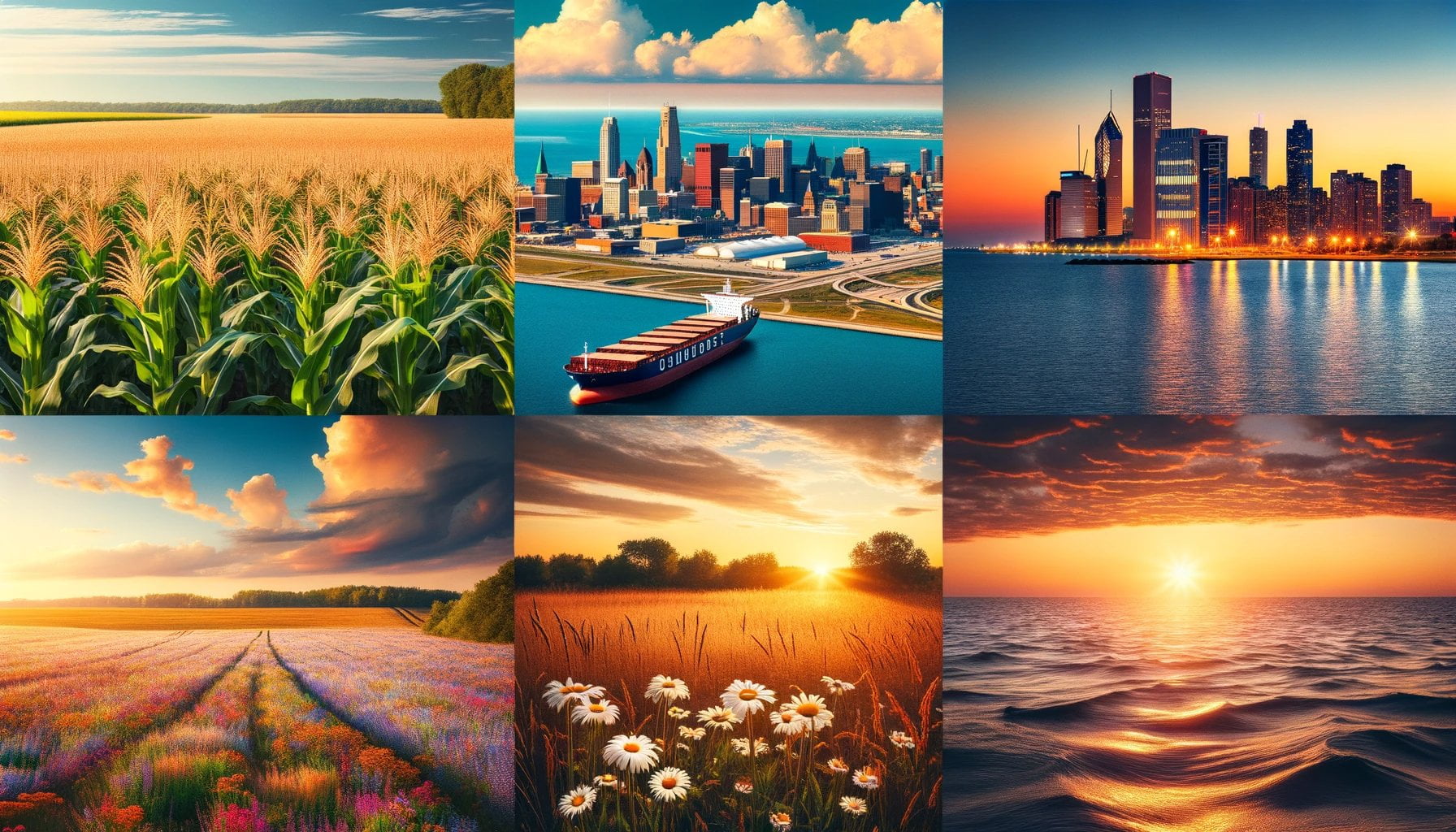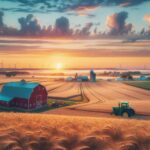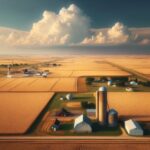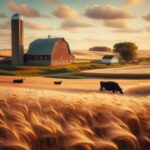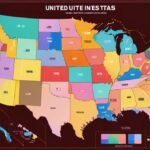You might think you know everything about the Midwest, but you’re wrong. This piece, “Unveiling the Midwest: 4 Surprising Facts That Redefine the Region,” will show you parts of this huge area that not many people know about. The Midwest has many surprises that will make you question what you think you know and make you want to travel. It has beautiful national parks and historic sites, big highways that are easy to get to, and some of the most populated cities and natural resources in the country.
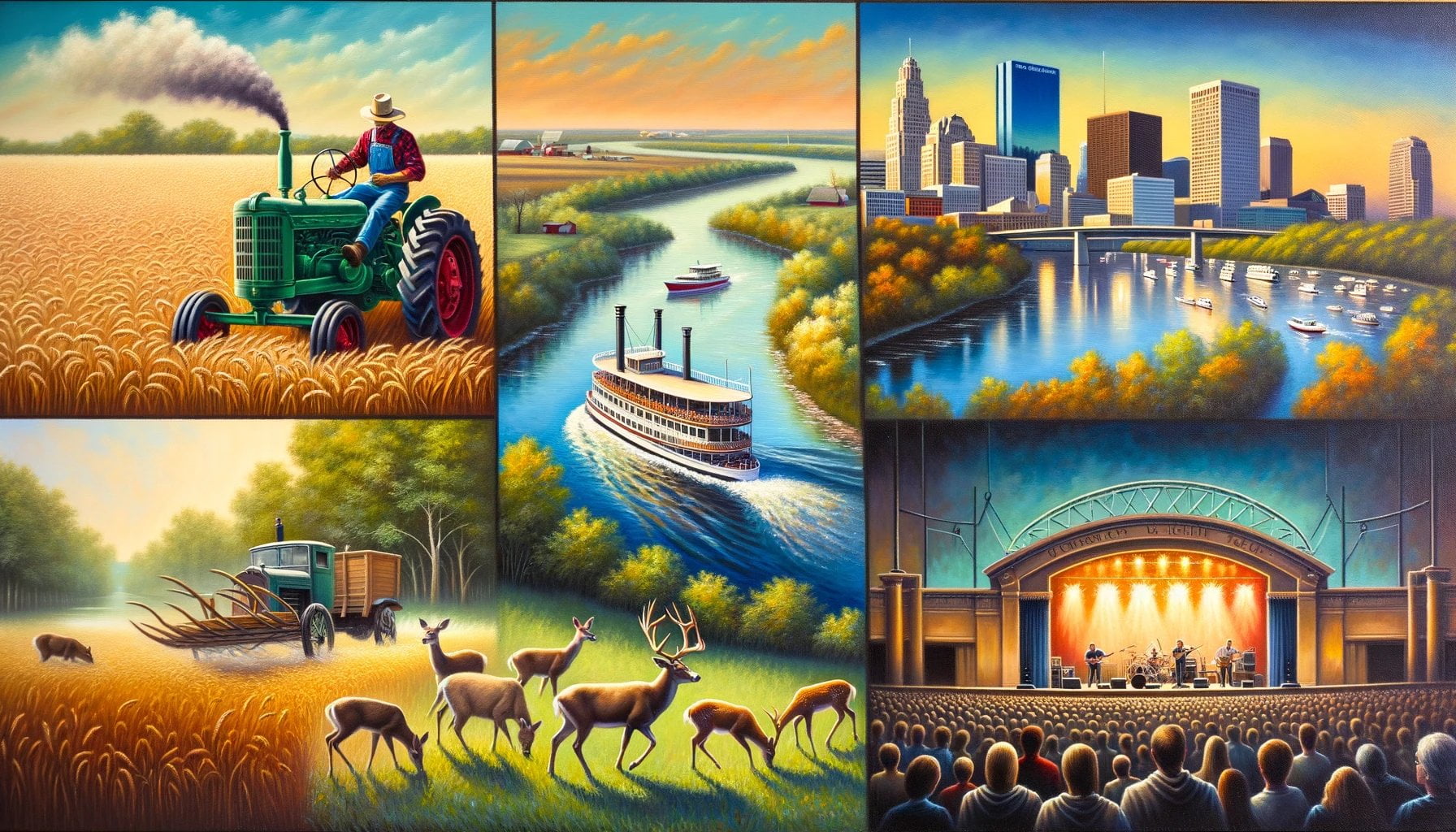
Key Takeaways:
1. The Midwest region of the United States, often known as “America’s Heartland,” is culturally rich and historically significant.
2. Major rivers such as the Mississippi and Missouri Rivers are vital for transportation and recreational activities in the Midwest.
3. The presence of the Great Lakes in the Midwest not only provides freshwater resources but also attracts tourists and supports various industries.
4. The Midwest has a strong mining industry, particularly in iron ore, which has contributed to its economic development.
5. The Midwest was a significant part of the Louisiana Purchase, expanding American territory and opening up opportunities for settlement.
6. The Midwest experiences more tornadoes than any other region in the country, earning it the name “tornado alley.”
7. The Midwest has distinct seasonal weather conditions, with hot and humid summers and cold winters, particularly in the northern parts.
8. The Midwest has been the birthplace of many influential figures in American history and has a rich cultural heritage.
9. The Midwest boasts unique attractions like a Stonehenge junkyard and the world’s most crooked street in San Francisco.
10. The Midwest has a diverse economy encompassing industries such as manufacturing, agriculture, technology, and healthcare.
4 Facts About the Midwest Region
Fact 1: The Midwest has a lot of different landscapes and natural resources.
The United States’ Midwest, which is sometimes called “America’s Heartland,” is full of different scenery and natural resources. The Midwest has a lot of beautiful natural features, from the Great Lakes to the tall mountain areas. Did you know that the beautiful Mississippi and Missouri Rivers run through the area? They are important for transportation, business, and leisure. These big rivers not only connect the Midwest to the rest of the country, but they also shape daily life in the area and offer a lot of chances to explore.
Fact 2: The Midwest has a lot of cultural history
The Midwest is beautiful in its own right, but it also has a rich cultural past that has left an indelible mark on American history. Many different cultures and ethnicities have lived in this area at the same time, giving it a lively and unique character. The pioneering energy and tenacity of its people can be seen in everything from the hardworking farmers who work the land to the creative business owners who shape its industries. It is where many important people and groups that have changed the country were born.
Fact 3: The weather in the Midwest is hard to predict.
Weather changes are one thing that comes to mind when you think of the Midwest. This area has more storms than any other in the country, which is why it’s called “tornado alley.” The strength and regularity of tornadoes make Kansas, Missouri, Nebraska, and Oklahoma a unique and exciting place to live. The weather in the Midwest is interesting for more than just storms, though. The seasons also change clearly in this area, with hot and sticky summers and cold, gray winters, especially in the north. No matter if you’re amazed by how strong a storm is or how beautiful the winter scenery is, the Midwest’s weather will always surprise and inspire you.
Fact 4: The Midwest has a wide range of industries.
The Midwest’s economy is strong and varied, encompassing many different types of businesses. It is not just a leader in agriculture. The Midwest’s economy has always been based on farming and industry, but the area has also been open to new technologies and ideas. There are a lot of job possibilities and economic growth in the Midwest, in fields like finance, renewable energy, healthcare, and technology. With more than 34 million workers, the Midwest’s economy continues to grow and change, making a big difference in the country’s general well-being.
In conclusion, the Midwest of the United States is a fascinating tapestry of cultural history, natural beauty, unpredictable weather, and different types of businesses. We can question our ideas about the Midwest by looking into these four facts. This way, we can find the hidden gems that make this area truly remarkable. So why not take a trip to the middle of nowhere and find the secrets and wonders that are there?
The Midwest region is known for its rich cultural heritage, diverse landscapes, and thriving agricultural industry. Interested to discover what makes the Midwest unique? Check out our article on What is the Midwest region known for? for fascinating insights. Wondering just how large this region is? Find out more in our article exploring How large is the Midwest region?. Discover the incredible wonders and untold stories of the Midwest by exploring What is unique about the Midwest? with us. Come and embark on a journey through the heartland of America!
4 Facts About The Midwest Region Most Populated Cities
This part of the United States is often forgotten when people are looking for places to visit, but it’s full of interesting facts that will make you want to see more of the world. This piece will talk about four interesting facts about the most populous cities in the Midwest.
First fact: Chicago is the crown jewel of the Midwest.
People often think of Chicago as the unofficial capital of the Midwest because it is the biggest city in that region. It is a busy metropolis with a lot of history and culture. People come to Chicago for a unique experience. From its famous skyline adorned with architectural wonders to its lively music and arts scene, Chicago has something for everyone.
In fact, there are many ways to grow corn.
Did you know that the Midwest grows more corn than any other part of the US every year? The Midwest has become a corn producing paradise thanks to its rich land and mild weather that are perfect for growing corn. Not only does this agricultural wealth help the economy of the area, it is also very important for providing food and resources for the whole country.
Third fact: roller skates were invented
Roller skates were invented in the Midwest, which is a fun fact about the area. This popular game for fun was created in the Midwest, showing how creative the area is and how much people love being outside. Roller skating adds a fun extra to your Midwest trip, whether you’re going for a ride along the lake in Chicago or visiting the cute streets of a Midwestern city.
4: The Great Lakes are a great way to connect.
The Midwest is full of beautiful nature sights, but the Great Lakes are the most impressive. Lake Superior, Lake Michigan, Lake Huron, Lake Erie, and Lake Ontario are some of these beautiful bodies of water that touch six Midwest states. In addition to their beautiful beauty, the Great Lakes offer a wide range of fun things to do, such as swimming, boating, fishing, and beachcombing. They are also an important source of fresh water for the area and beyond.
Key Takeaways:
– Chicago, the largest city in the Midwest, is known for its vibrant culture and iconic skyline.
– The Midwest region produces more corn each year than any other region in the United States.
– Roller skates were invented in the Midwest, adding a touch of fun to the region’s outdoor activities.
– The Great Lakes, which touch six Midwest states, offer stunning beauty and abundant recreational opportunities.
Sources:
– KonnectHQ: Midwest Facts for Kids
4 Facts About the Midwest Region Natural Resources
Key Takeaways:
– The Midwest region is rich in natural resources that play a vital role in supporting agriculture and various industries.
– The abundant water resources in the Midwest provide essential irrigation for farming and hydroelectric power generation.
– The fertile soil in the region sustains the cultivation of major crops like corn, wheat, and soybeans.
– The Midwest is also known for its mineral resources, including coal, iron ore, copper, and limestone, which contribute to its economic growth.
The United States’ Midwest has a lot of different natural resources that have helped shape its character and economic growth. The Midwest’s natural resources, like its lots of water, rich soil, and valuable minerals, are a big part of why its agriculture and other businesses are so successful.
Getting enough water is important for farming in the Midwest.
Storymaps.arcgis.com is the source.
The Midwest has a limited supply of water, which is very important for farming and making electrical power. As well as the Great Lakes and the Mississippi and Missouri Rivers, the area is known for its large water systems. These waterways provide irrigation water, which lets farmers grow food even in places where it doesn’t rain much. Also, the rivers make electrical power, which helps the area meet its energy needs and stay sustainable.
2. Fertile Soil: Taking Care of the Country’s Breadbasket
The Midwest’s rich soil is an important natural resource that helps it keep its title as the “Breadbasket of the Nation.” The rich nutrients in this soil make it possible to grow important foods like corn, wheat, and soybeans, which feed both the US and the rest of the world. The Midwest has a good temperature with moderate rainfall and sunshine, which makes farming even more productive and turns the area into an agricultural powerhouse.
3. Minerals: What’s Under the Midwest’s Surface
Even though farming is what the Midwest is best known for, it also has a lot of important minerals. Some of the materials that can be found in the area are coal, iron ore, copper, and limestone. These resources are very important in many fields, such as manufacturing, building, and making energy. They have an effect on the economic growth of the Midwest and create jobs.
4. Finding a balance between industrial and agricultural growth
The Midwest has a unique mix between industrial and agricultural growth, with its natural resources moving these industries forward. The region’s rich water and fertile land allow it to produce a huge amount of crops, which feeds not only locals but also people all over the world. Mineral resources, on the other hand, power industries and encourage economic diversity, which boosts the Midwest’s total growth.
In conclusion, the Midwest’s natural riches are a big part of what makes it unique and help it grow economically. The area has a lot of water for farming and hydroelectric power, and the land is very fertile for growing big crops. This shows how closely nature and human activity are connected. There are also a lot of valuable minerals in the Midwest, which helps a lot of different industries grow and progress. Learning about and appreciating these natural resources can help you see the many possibilities and challenges that make up the Midwest.

FAQ
What are some interesting facts about the national parks and historic places in the Midwest?
A1: There are many interesting national parks and historic places in the Midwest. These include the Indiana Dunes National Park, the Apostle Islands National Lakeshore, and the Gateway Arch National Park in St. Louis. These places have beautiful natural scenery, cultural importance, and chances to explore and go on adventures.
What are some of the most important roads in the Midwest?
A2: There are many important highways that run through the Midwest. Interstate 80, for example, goes from coast to coast and through Illinois, Iowa, and Nebraska. Other important highways in the area are Interstate 94, Interstate 35, and Interstate 70, which make travel easier and connect many Midwest towns and states.
Q3: Which towns in the Midwest have the most people living in them?
Answer 3: The Midwest is home to a number of busy, crowded towns. Chicago, the third-largest city in the United States, is one of the most populous cities in the area. Other cities with lots of people include Indianapolis, Columbus, and Detroit. There are many culture, business, and fun things to do in these cities.
What are some of the natural riches that can be found in the Midwest?
A4: There are a lot of natural resources in the Midwest, which has helped its business and growth. The area has some important natural resources, such as fertile land that is good for farming and growing crops like corn and soybeans. Mineral resources like coal, iron ore, and limestone have also been very important to many businesses in the Midwest. Additionally, the area’s water resources, such as the Great Lakes, provide groundwater for drinking, farming, and fun activities.
q
